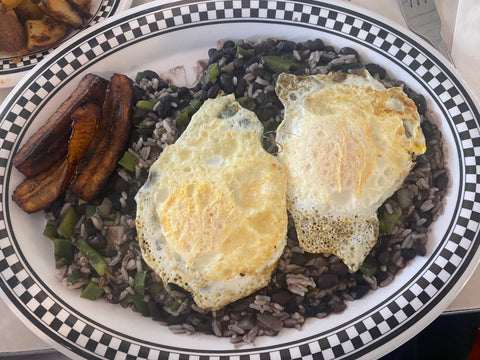What could be more all-American than a classic 1950s diner? I remember when a “diner” opened in a strip mall in my hometown. They attempted to make it look authentic, but it was a chain and the décor choices were clearly made by stiffs in a boardroom. There were mauve booths with paisley, and that alone should speak to the big picture.

Granted, some of my neighbors were excited about this version of a diner, which was newer, cleaner and trained servers to be perky. I prefer grey-haired, straight-shooting servers full of sass. They’ve been through it and will not hesitate to raise an eyebrow if you dare ask for quinoa at a greasy spoon. And really, should the words “new” and “diner” ever be in the same sentence?
A diner is supposed to have a little grit. It’s open 24 hours and has seen some things. They sober up the crowds that fill the booths when the bars close, with endless coffee and burgers. In the morning they tend to the hung over, with greasy breakfasts and even more coffee. And in between these shifts are the truckers, night owls and recluses working graveyard shifts. The bathrooms are outdated and the coffee isn’t great, but the comfort food will send you off ready for a restorative nap.

I recently took a trip to New York to see a live taping of Saturday Night Live (!), and came across an old school diner that checked all the boxes. It was old, authentic, and smelled of fried food. There were Formica counter tops, spinning chrome stools and booths lined in turquoise vinyl.
The menu was large – page after page of American classics. They say a large menu means a lot of the food is frozen. But who goes into a diner expecting an organic farm-to-table experience? What made this menu special however, was the presence of Latinx-inspired food. Huevos rancheros, chilaquiles and the item I ordered – gallo pinto. One might wonder why an all-American diner would feature such options. And could these dishes even be authentic?

I’ll tell you something that everyone in the service industry already knows – something even Anthony Bourdain spoke of often. Many restaurant kitchens across America employ people from Spanish-speaking countries. Latinx people are making the garlic confit in your local French restaurant, the sushi rolls in Michelin-starred Japanese restaurants, and most certainly in American diners. In this mixing bowl of a country, it was only a matter of time before these cooks and chefs became skilled enough to convince the owners to feature breakfast specialties from their homeland. In some diners, they started as line cooks and moved their way up until they were running the restaurant. Some even bought out the owners. We benefit from their creative input.

I had never heard of gallo pinto. Though I was eyeing the corned beef hash, when would I have this opportunity again? I had two fried eggs laid atop a bed of black beans and rice, seasoned with onions, peppers and a generous helping of fresh-chopped cilantro. It was topped with sour cream and had a side of plantains. I never knew vegetables in a diner could have so much zest. Veggies in a diner usually consist of a steamed broccoli and cauliflower mix, featuring those wavy-cut carrot slices. Gutless, but responsible.
But not my gallo pinto. It packed a lot of flavor. Besides, it doesn’t it feel sacrilige to order scrambled eggs and toast, when we could so easily make it at home? The American diner may be a place to grab a sturdy breakfast or a chocolate malt, but I love that the menus are evolving to reflect the communities we live in. Years ago, we may have scoffed to see pasta on a diner menu. Nowadays, Italian options don't even cause us to blink. Immigrants have opportunities to get a taste of their homeland, and the rest of us get introduced to new flavors. What could be more American?

Do yourself a favor and pay a visit to a local diner. And if it’s brand new, in a strip mall, or has servers that don't give you the stink eye, it does not count.


Comments (0)
Back to L & L Blog By: Fayeruz Regan